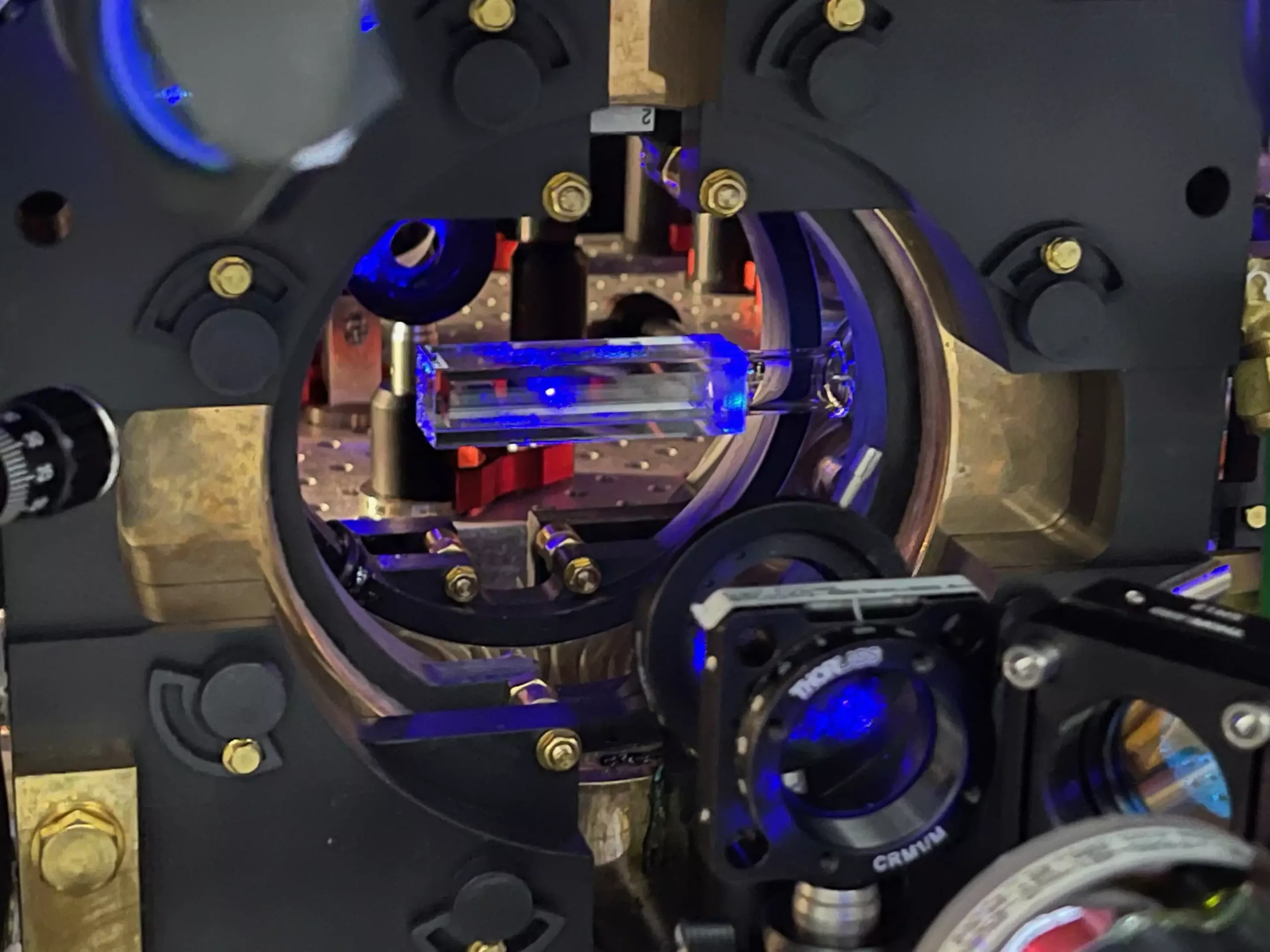Quantum physics has opened up a world of possibilities in terms of understanding the microscopic properties of materials. High-precision sensing techniques are crucial in delving deeper into the quantum realm, and quantum-gas microscopes have emerged as powerful tools for this purpose. These devices offer the ability to produce images of quantum gases with exceptional resolution, allowing researchers to detect individual atoms.
A team of researchers at ICFO in Barcelona, Spain, led by ICREA Professor Leticia Tarruell, set out to build their own quantum-gas microscope named QUIONE, after the Greek goddess of snow. This groundbreaking microscope is the only one in the world capable of imaging individual atoms of strontium quantum gases, making it a pioneer in Spain. The team’s research has been published in the journal PRX Quantum, showcasing the immense potential of their innovative approach.
The singularity of the QUIONE experiment lies in the team’s ability to bring strontium gas into the quantum regime, placing it in an optical lattice for interactions between atoms while applying single atom imaging techniques. The combination of these elements sets ICFO’s strontium quantum-gas microscope apart from others. Traditionally, microscope setups have relied on alkaline atoms like lithium and potassium, which have simpler optical properties compared to alkaline-earth atoms such as strontium. The unique properties of strontium have made it an attractive element for applications in quantum computing and simulation due to its versatility and capabilities.
To achieve their goal, the researchers at ICFO first had to lower the temperature of the strontium gas using laser beams to slow down the atoms to nearly absolute zero. This process allowed the atoms to exhibit quantum properties such as superposition and entanglement, paving the way for in-depth quantum simulations. By activating the optical lattice, the atoms were arranged in a grid-like structure, enabling interactions and quantum tunneling between them. The researchers successfully captured images of the strontium atoms, observing their quantum behavior in real-time.
Through their quantum-gas microscope, the research team confirmed that the strontium gas exhibited superfluidity, a quantum phase of matter that flows without viscosity. By switching off the lattice laser and allowing the atoms to expand and interfere with each other, they were able to observe the wave-particle duality of the atoms in the superfluid state. This discovery marks a significant advancement in quantum simulation research and opens up new possibilities for studying complex materials and predicting new phases of matter.
The development of quantum-gas microscopes such as QUIONE has revolutionized the field of quantum physics research by providing unprecedented insights into the behavior of atoms at a microscopic level. The ability to image individual atoms and study their quantum properties has profound implications for understanding complex materials and advancing quantum computing technologies. With continued innovation and exploration in this area, researchers are poised to unlock new frontiers in quantum science and reshape our understanding of the fundamental building blocks of the universe.


Leave a Reply